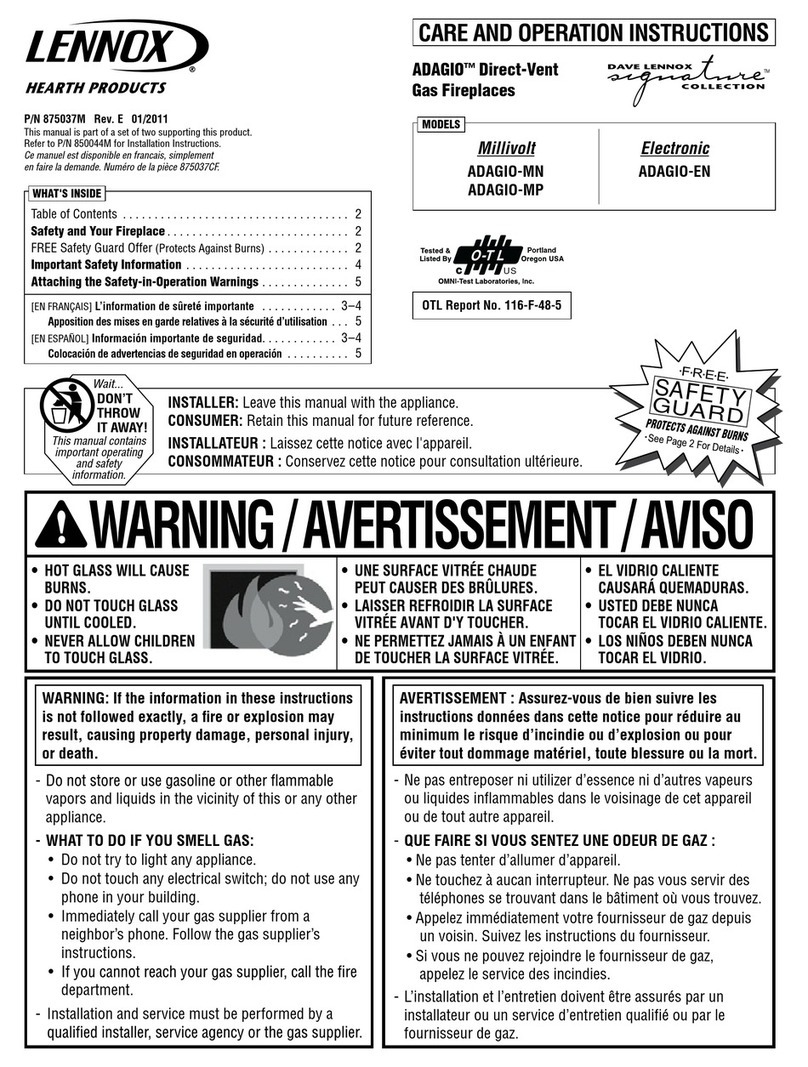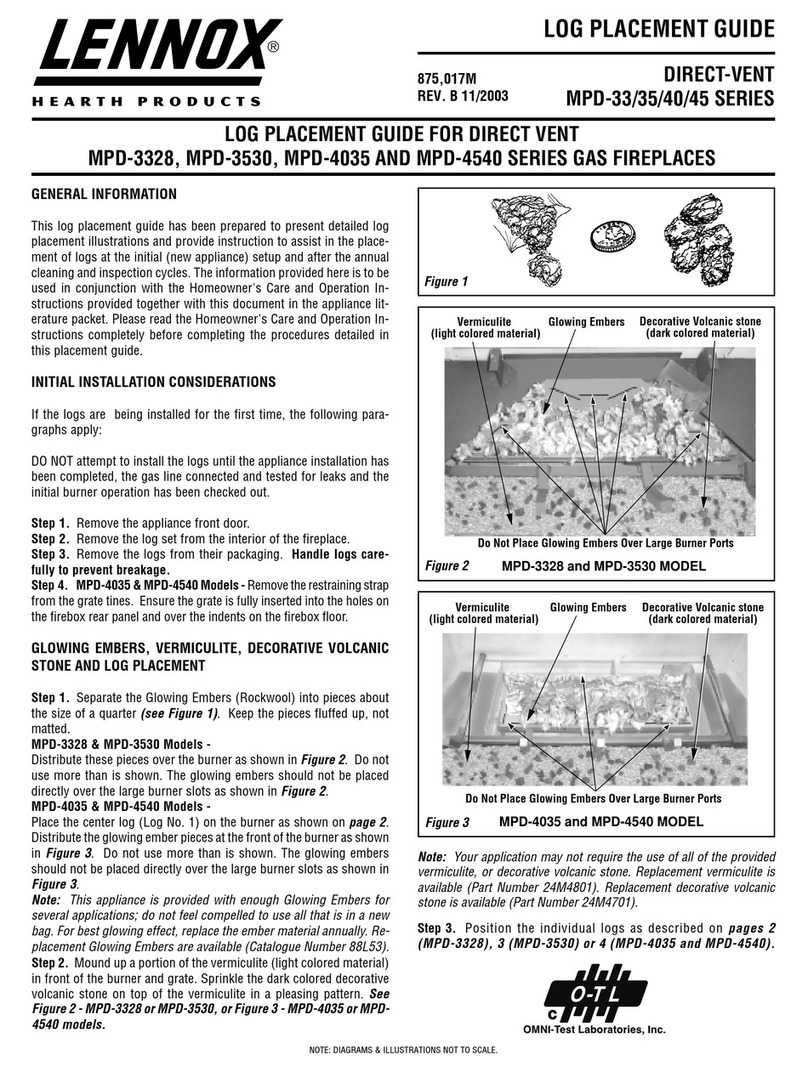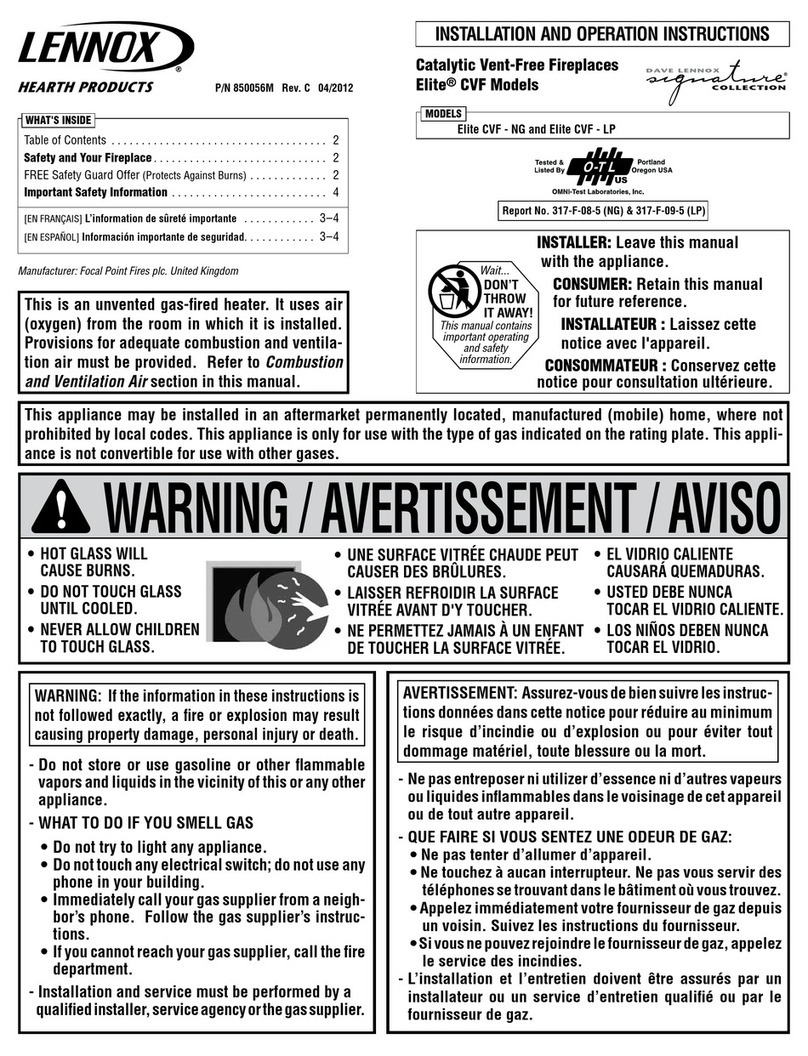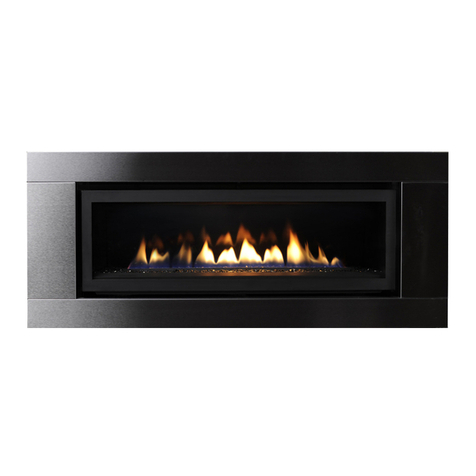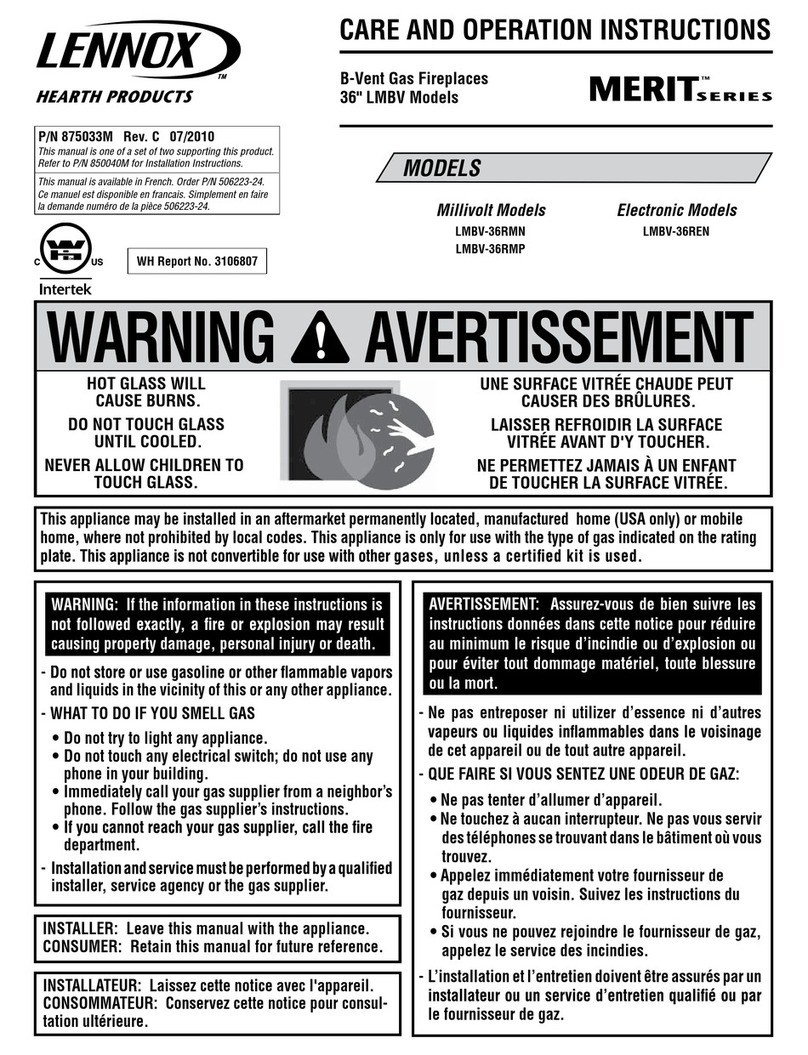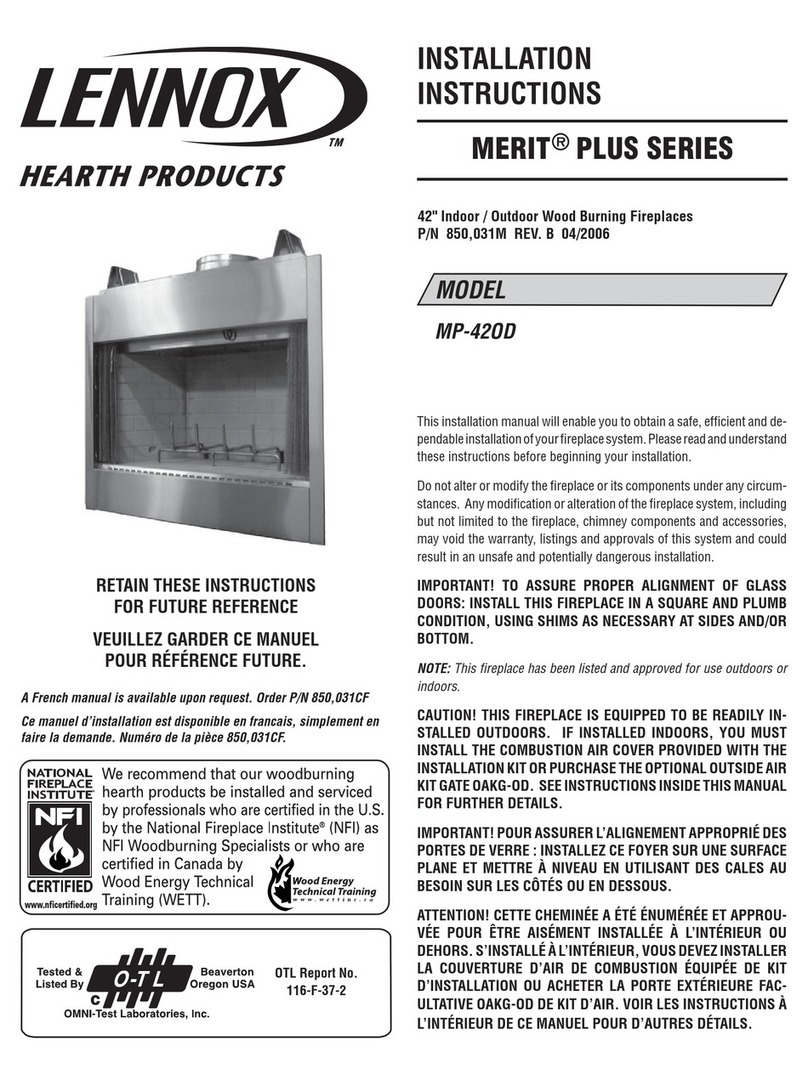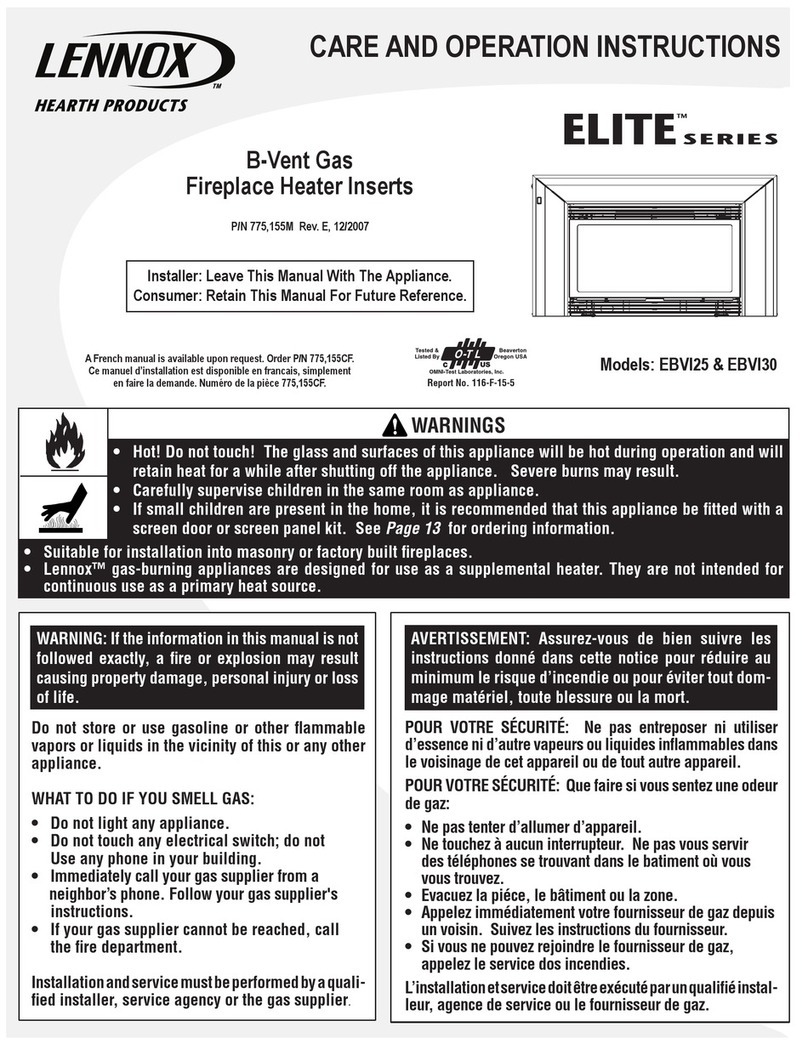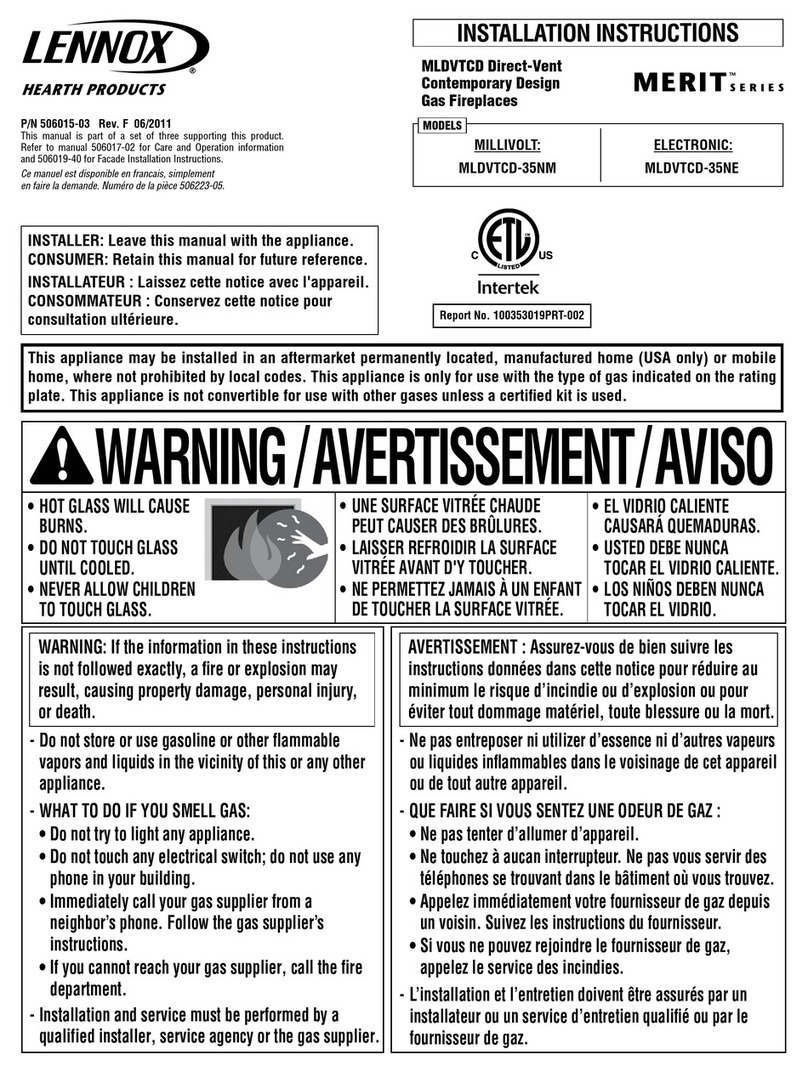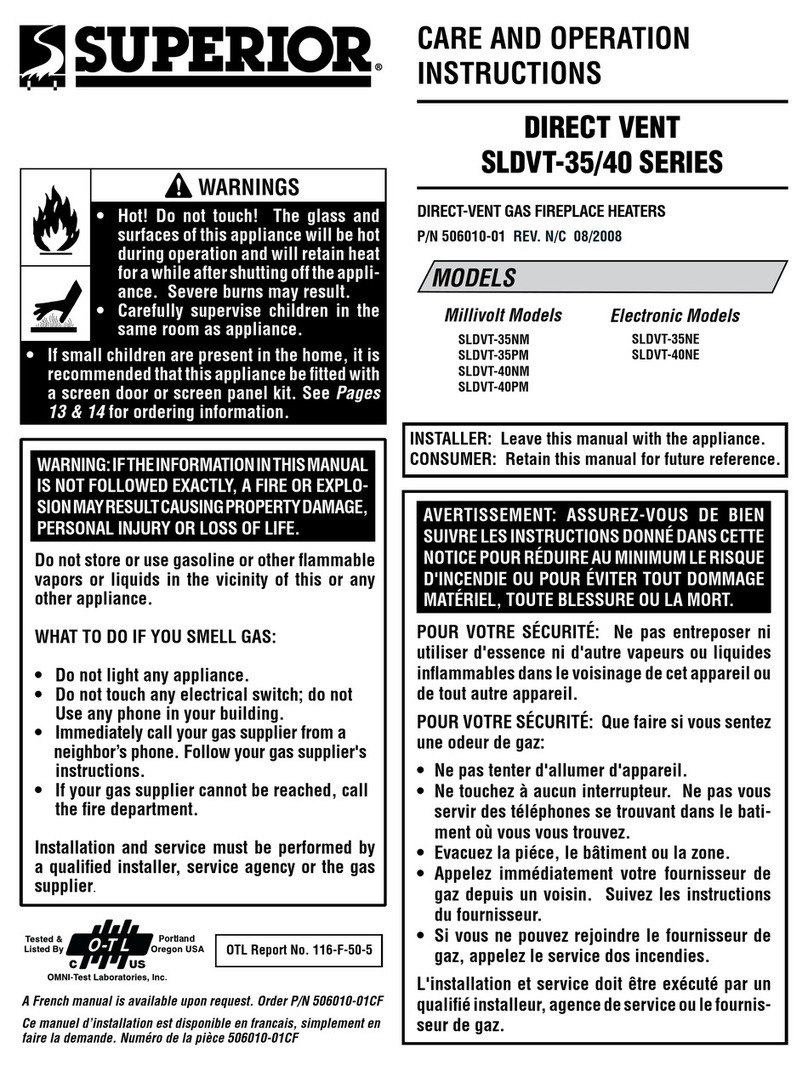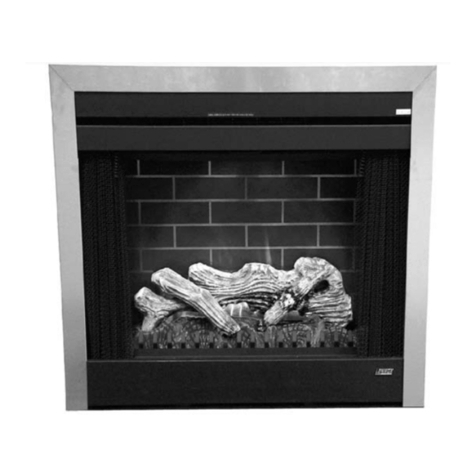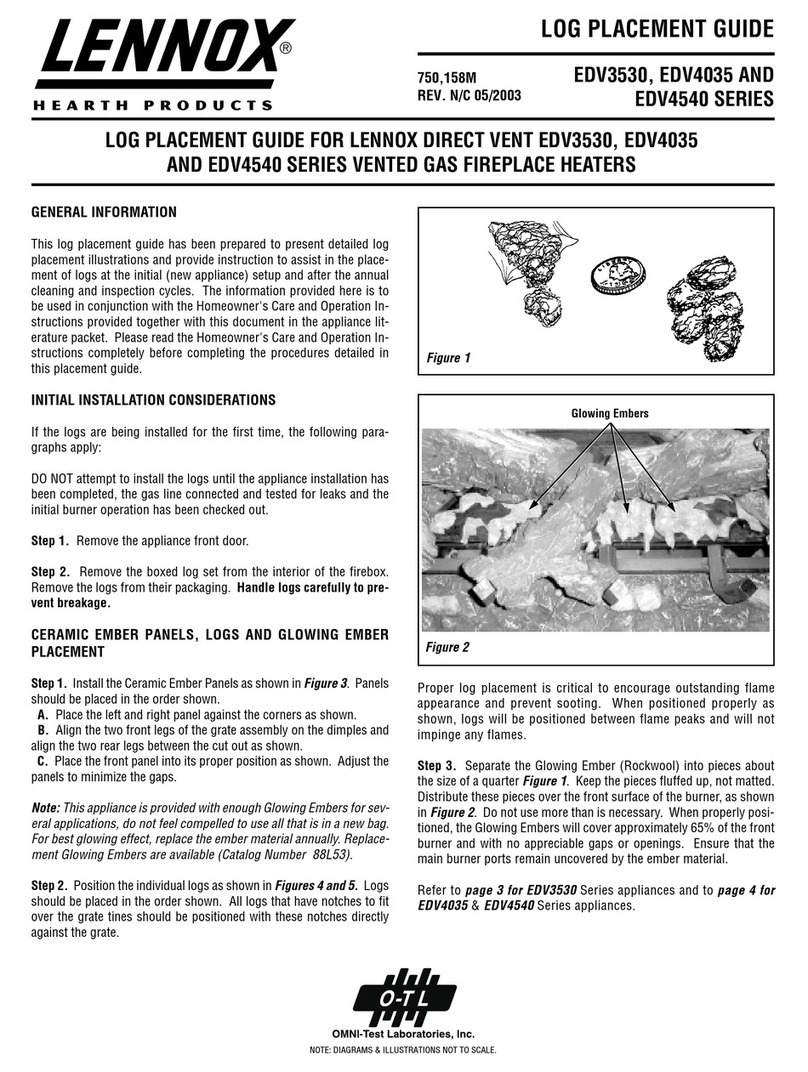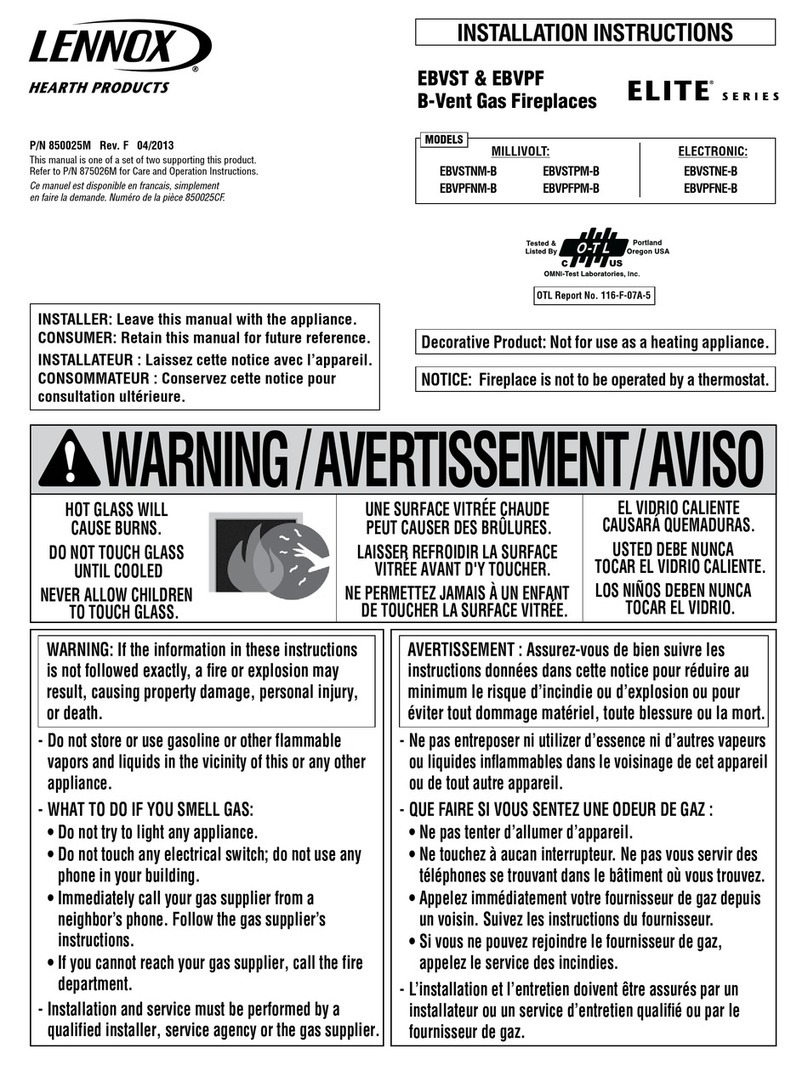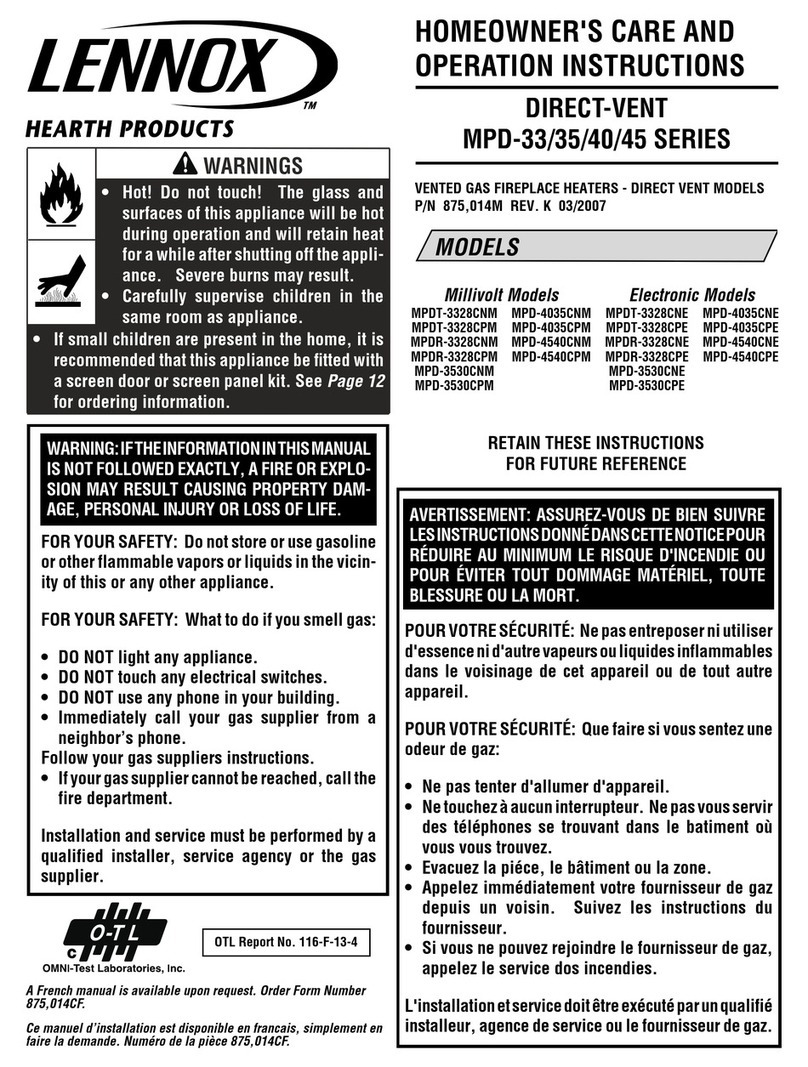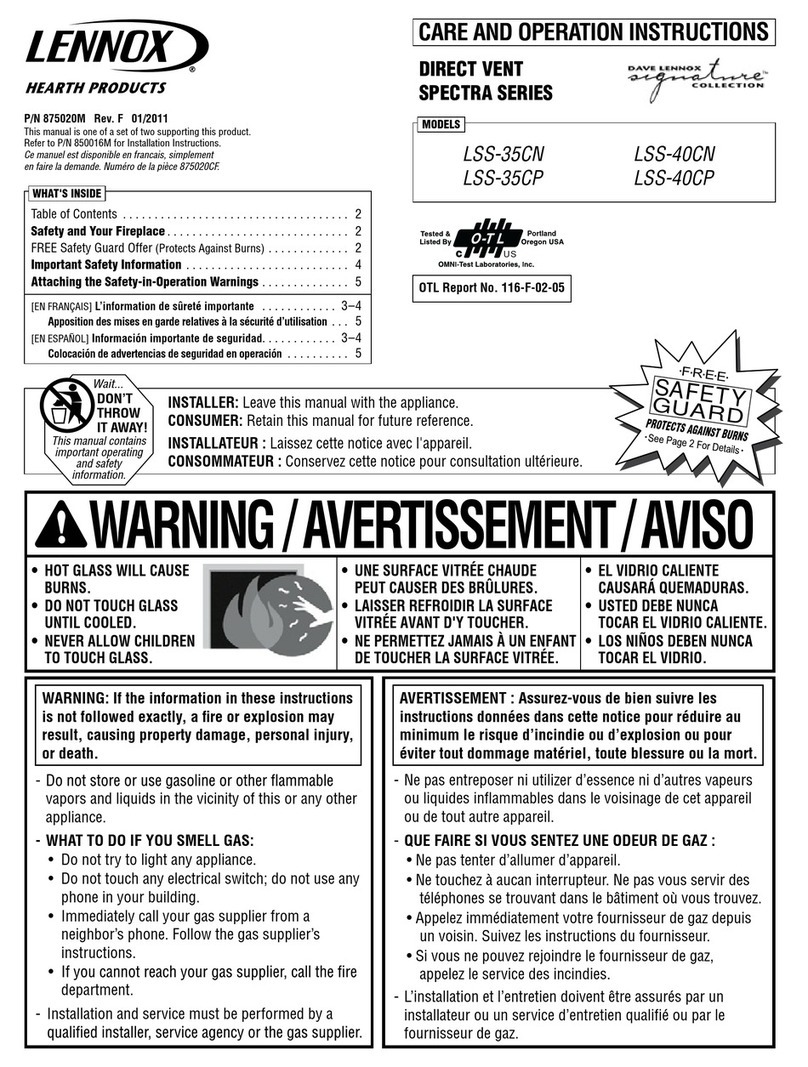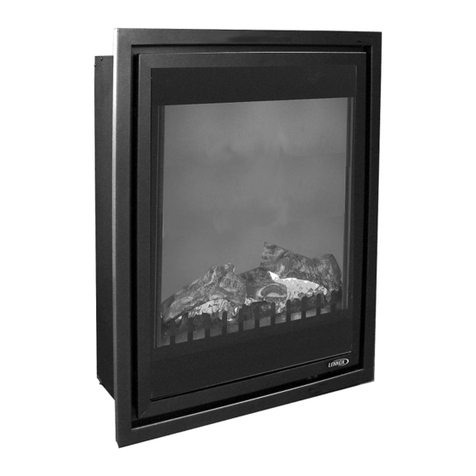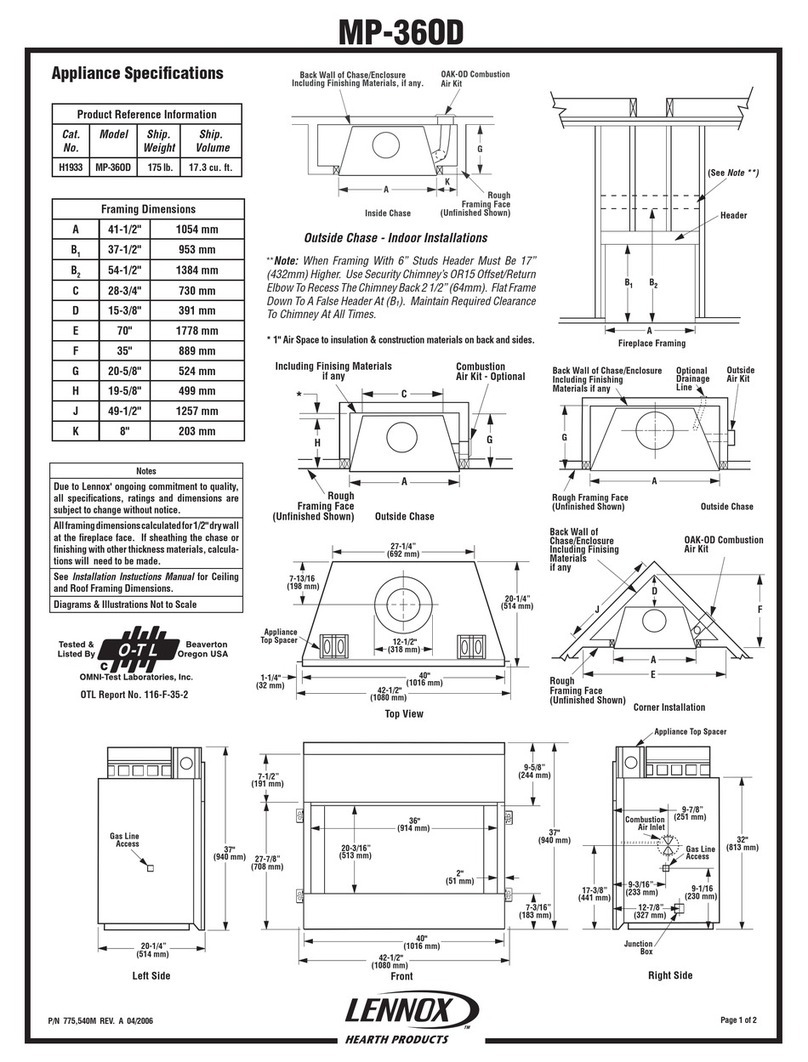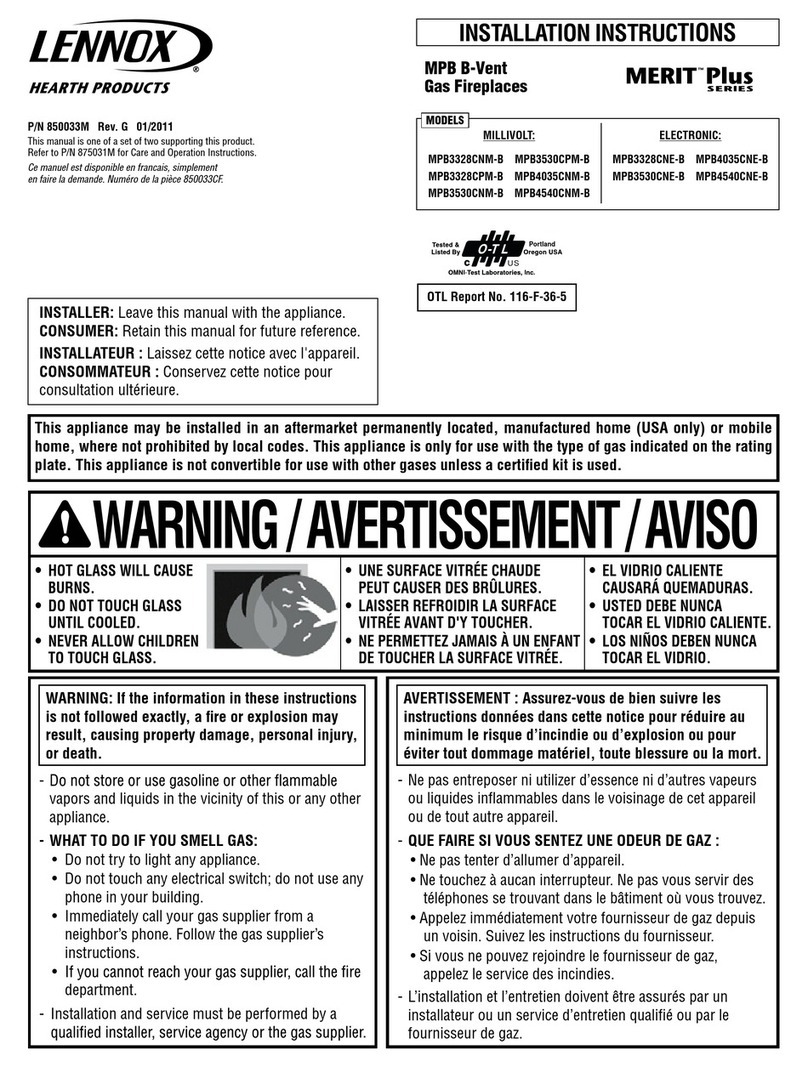
2
WARNING
Young children should be
carefully supervised when they
are in the same room as the
appliance. Toddlers, young
children and others may be
susceptible to accidental contact
burns. A physical barrier is
recommended if there are at
risk individuals in the house.
To restrict access to a fireplace
or stove, install an adjustable
safety gate to keep toddlers,
young children and other at risk
individuals out of the room and
away from hot surfaces.
AVERTISSEMENT
Les jeunes enfants devraient
être surveillés étroitement
lorsqu’ils se trouvent dans la
même pièce que l’appareil.
Les tout petits, les jeunes
enfants ou les adultes
peuvent subir des brûlures
s’ils viennent en contact
avec la surface chaude. Il
est recommandé d’installer
une barrière physique si des
personnes à risques habitent
la maison. Pour empêcher
l’accès à un foyer ou à un
poêle, installez une barrière
de sécurité; cette mesure
empêchera les tout petits,
les jeunes enfants et toute
autre personne à risque
d’avoir accès à la pièce et aux
surfaces chaudes.
GENERAL INFORMATION
LENNOX HEARTH PRODUCTS • MONTEBELLO® DLX POWER VENT DV GAS FIREPLACES (MDLX40/45IN-PV) • INSTALLATION INSTRUCTIONS
TABLE OF CONTENTS
Packaging .........................................Page 2
Introduction ......................................Page 2
General Information ..........................Page 2
Massachusetts Requirements...........Page 4
Cold Climate Insulation .....................Page 5
Manufactured Home Requirements ..Page 5
Location............................................Page 5
Vent Termination Clearances ............Page 6
Minimum Clearances to Combustibles Page 8
Pre-Installation Steps........................Page 9
Typical Installation Sequence ...........Page 9
Detailed Installation Steps.................Page 9
Step 1. Framing...............................Page 9
Fireplace and Framing Specifications Page 10
Step 2. Routing Gas Line ................Page 11
Proper Sizing of Gas Line..................Page 11
Step 3. Install the Vent System .......Page 12
General Vent Information..................Page 12
Power Vent Components...................Page 12
Vent Section Length Chart ................Page 13
Offset Installation..............................Page 13
Horizontal Termination System .........Page 16
Installing Power Vent Termination ....Page 16
Step 4. Field Wiring.........................Page 18
Step 5. Removing Glass Door
Frame Assembly ...............................Page 20
Step 6. Connecting Gas Line ...........Page 21
Step 7 Install Firebox Liner ............Page 21
Step 8. Verifying Appliance
Operation ..........................................Page 21
Step 9. Installing Logs ...................Page 22
Step 10. Install/Remove Glass
Door Assembly .................................Page 24
Step 11. Burner Adjustments............Page 24
Finishing Requirements ....................Page 26
Step 12. Attaching Safety-in-
Operation Warnings ...................
Page 27
Installation Accessories ....................Page 28
PACKAGING
The assembled vented gas fireplace is packaged with:
BOX 1—Fireplace:
• Literature Kit (plastic bag shipped
inside rebox),
• Bags of Glowing Embers, Platinum Embers,
and Volcanic Stone
•Pull Screen
• Door Modesty Shield
• Adaptor with Probe Assembly
• (1) Remote Control Kit and Receiver Kit
BOX 2—Power Vent Components:
• (1) Power Vent Termination
• (1) Termination Adaptor
• (1) Horizontal Firestop Assembly
• (1) Vacuum Hose
• (1) 11/32 in. Hose Clamp
• (1) Strain Relief
• (1) Bushing
• (4) Insulated 1/4 in. Male Terminals
• (2) #10 Ring Terminals
REQUIRED ACCESSORIES
The following accessories are required:
• One of the following Firebox Liner Kits:
a. Ceramic Liner Kit—Buff Rustic
b. Ceramic Liner Kit—Red Rustic
c. Porcelain Liner Kit—Black
d. Ceramic Liner Kit—Red Herringbone
e. Ceramic Liner Kit—Buff Herringbone
NOTE: Porcelain kits include side and back
panels. Optional for use with log sets.
Required when using the contemporary
burner/floor kit.
• One of the following Floor Options:
a. Oak Log Set (For use with fireplace as
shipped from factory only. Not for use with
contemporary burner/floor kit.)
b. Contemporary Burner/Floor Kit
Contemporary Burner/Floor Kit requires
one of the following Media Kits:
i. Crushed Glass—Reective Black
ii. Crushed Glass—Platinum
iii. Crushed Glass—Reective Blue
iv. Crushed Glass—Goldfinger
v. Crushed Glass—Copper
NOTE: The Contemporary Burner/Floor Kit
installation instructions are provided
with the kit, and are not detailed in this
manual.
INTRODUCTION
These Electronic appliances are designed to
operate on natural gas and have an electronic
intermittent pilot ignition system. External
120 Volt AC electrical power is required to
operate these units.
These vented gas fireplaces are sealed
combustion gas replaces designed for
residential, manufactured home, and
commercial applications.
Use Only These Approved Vent Components
These replaces are designed, tested and
listed for operation and installation with, the
following (4 1/2 in. inner and 7 1/2 in. outer)
vent components only:
• Secure Vent®Direct-vent system
components manufactured by Security
Chimneys International.
These approved vent system components
are labeled for identication. Do NOT use any
other manufacturer’s vent components with
these appliances.
Children and adults should be alerted to the
hazards of high surface temperature and should
stay away to avoid burns or clothing ignition.
Les enfants et les adultes devraient être
infor-més des dangers que posent les
températures de surface élevées et se
tenir à distance afin d’éviter des brûlures
ou que leurs vêtements ne s’enflamment.
DO NOT ATTEMPT TO ALTER OR MODIFY
THE CONSTRUCTION OF THE APPLIANCE
OR ITS COMPONENTS. ANY MODIFICATION
OR ALTERATION MAY VOID THE
WARRANTY, CERTIFICATION AND LISTINGS
OF THIS UNIT.
